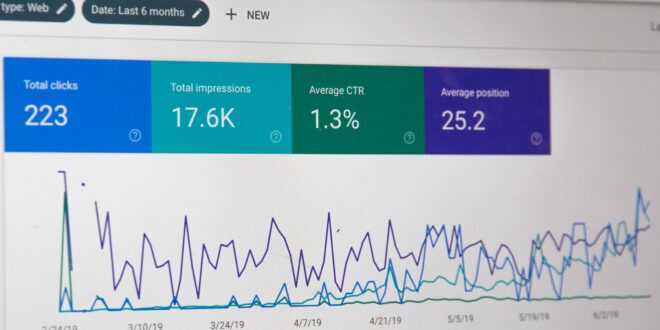The data feed management process (DFM) is a way to get the right metrics from your websites and apps, mostly for commercial purposes. Using DFM helps you track important information such as conversions, average time spent on page, and much more. This helps you track down the progress, and see what you can do to improve the way your ecommerce or other type of website works.
When you create a data feed for your site or app, you send the information needed to collect them directly into your account. This allows you to easily access these metrics at any time.
But, what exactly is a data feed? How does it work? And why should you care?
The data feed management (DFM) process is a crucial component of any marketing strategy. This is because it helps companies capture valuable customer information, and provide them with relevant offers.
There are three main components to DFM: data sources, data processing, and data delivery.
But, let’s get some things clear, so we can understand the importance of DFM process.
1. What is data feed?

Data feeds are simply a way to provide information about your website or company’s current status, not just what happened yesterday, but what is happening today, tomorrow, and even weeks down the road.
You can receive data feeds from many sources. For example, you can use Google Analytics, Google Search Console, or additional tools related to your overall commercial performance like cart.com. Also, if you want to get insights on your social media, you can access the insights and analytics tabs, to explore the data feed.
You need to collect all the needed data, in order to manage the feeds properly.
2. What is data?
Data is information that is stored electronically. It’s any type of information that someone wants to capture, store, retrieve, analyze, and/or share. There are many ways people use data, including business intelligence (BI), analytics, marketing, operations, and research.
Data management is the act of managing the storage, retrieval, analysis, and sharing of data. When working with data, it’s important to understand what types of data exist, where they live, how to access them, and how to use them.
3. What does data management mean?

Data management is the process of collecting data, analyzing it, managing it, and using it for decision making. A major goal of data management is to make sure that the right data is being collected, analyzed, managed, and used at the right time. In addition, it ensures that the quality of the data is maintained throughout its lifecycle.
4. What are the main types of data
There are four basic types of data: structured, unstructured, semi-structured, and real-time. Structured data is organized according to a specific pattern and includes data files, databases, spreadsheets, and presentations. Unstructured data is not organized and cannot easily be processed. Examples of unstructured data include email messages, text documents, images, audio recordings, video recordings, and social media posts.
Semi-structured data is similar to unstructured data in that it is not organized; however, it can be indexed and searched like structured data. Real-time data is data that changes constantly and is often associated with events happening in the present moment. For example, temperature readings and air pressure measurements are real-time data.
5. What’s in the ecommerce data analytics?

This is a way to track down the performance of your marketing campaigns, expenses, return of investments, and see the audience’s behavior based on it.
Ecommerce analytics is a DFM process that we use to learn more about purchasing trends, measure the metrics, improve the current strategies, and maximize the profits.
You need all this data to be able to assess where your customers come from, how they find out about you, how to improve your strategy and which tools to use to optimize the process.
6. Why do we need to know about data management?
There are several reasons why you may want to learn more about data management. First, you may be interested in learning more about how to collect, manage, and share data. Second, you may be looking for career opportunities related to data management. Third, you may just want to improve your understanding of a topic that you have been studying.
Regardless of the reason, knowing more about data management helps you become a well-rounded individual and provides you with the skills necessary to succeed in today’s digital age.
But one thing is for sure – data analysis and feed management are crucial when it comes to estimating the business performance. So, you should at least know what it is and why it’s important.
7, How much time does it take to prepare data feeds?

Preparing data feeds has never been easier, because the modern tools allow us to set the criteria and get the report we want. When creating a data feed, you need to split the useful information from those that aren’t really relevant right now for your company.
When you use the right tools, it doesn’t take more than an hour. But sometimes, some tasks related to data feeds must be completed manually.
With the right combination of data apps and tools, and your basic knowledge in data analytics, you will be able to prepare clean and neat feeds that are easy-manageable.
Conclusion
The different methods of analyzing data can be confusing, but you’ll get used to them in no time. This is an important step when you are running a business or need to work on improving existing strategies.
But with the right data and proper management, you can always have a clean and clear analysis process. The benefits are numerous, but above all, you will be able to understand what your customers and users need and improve your services.
That is why you should have at least basic knowledge of data processing and managing data feeds.
All of this gives you an edge over your competition, as you can also track what they’re doing and use it to your advantage. Of course, stick to fair business principles and don’t abuse this data.
 Imagup General Magazine 2024
Imagup General Magazine 2024



